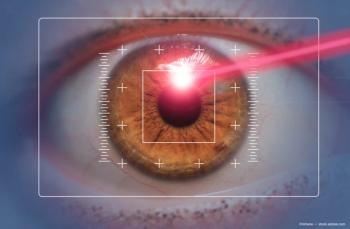
Study examines nanodrug for optic nerve recovery
Researchers indicate that minimally invasive treatment with NurExon Biologic’s ExoPTEN showed functional restoration of damaged eyes to healthy levels in animals.
NurExone Biologic Inc announced the preliminary results from a small-scale controlled study exploring the use of its flagship nanodrug, ExoPTEN, for optic nerve recovery in a rat model at Sheba Medical Center.
According to a news release, this study marks a second clinical indication being investigated for ExoPTEN.1
The study was initiated by Michael Belkin, MD, from Tel Aviv University’s Goldschleger Eye Research Institute, after ExoPTEN demonstrated nerve regeneration in the spinal cord indication in preclinical models. The study was carried out with Ygal Rotenstreich, MD, and Ifat Sher, PhD, both of Sheba Medical Center.
“Our ultimate goal is to restore and improve the quality of life for individuals affected by optic nerve diseases and injuries,” Belkin said.
According to a separate news release, the study is the latest step in expanding potential clinical indications for NurExone Biologic's exosome-loaded drugs.2
An optic nerve crush (ONC) model was used to simulate conditions like glaucoma, where the optic nerve is crushed, resulting in impaired vision.
Glaucoma is a common eye condition, particularly in older adults typically caused by optic nerve compression and pressure in the eye. The prevalence of glaucoma in the Western world is generally estimated to be around 2-3% in people aged 40 and older. The risk increases with age, and the prevalence can be higher in populations over 60. The estimated number of people affected in the United States alone, is over 3 million, with many more cases likely undiagnosed.
The research explored the therapeutic effects of ExoPTEN on retinal function after ONC compared to healthy baseline levels, an untreated ONC control and ONC treated with naïve exosomes.
According to the news release, ExoPTEN was administered minimally-invasively using suprachoroidal injection in a delivery system invented by Rotenstreich.
The researchers pointed out that the post-ONC control eyes exhibited a marked decline in retinal functionality, as evidenced by the lack of a peak (Fig. A – red graph). Experimental treatments with ExoPTEN (ONC+PTEN), showed promising results, with treated eyes exhibiting a peak similar to the healthy eye in the same animal indicating recovery of retinal response following optical nerve compression (Fig. B – green graph).1
Moreover, the researchers explained that the naïve exosome-treated rats (ONC+EXO) demonstrated a lower peak and increased latency indicating a weaker response (Fig. C – brown graph). The results presented are from just 18 days following the ONC damage.
The researchers pointed out the treatment findings suggest potential pathways for recovery of optic nerve function and overall healthy vision.
"While these results are preliminary, they form a solid foundation for further research,” the researchers said in the news release. “Our next steps include more extensive studies to validate these findings and explore their potential application for humans.”
Lior Shaltiel, PhD, CEO of NurExone, noted th ecompnay is pleased with the preliminary findings and he commend the team at Sheba for this work.
“It is an important step in our mission to develop regenerative therapies,” he said. “These early studies suggest potential for ExoPTEN in the $3.4 billion glaucoma market and will allow us to help those affected by retinal degenerative conditions.”
References:
Inc NB. Promising Preliminary Results in Optic Nerve Recovery Study of NurExone’s first product ExoPTEN for Glaucoma. GlobeNewswire News Room. Published July 17, 2024. Accessed July 18, 2024. https://www.globenewswire.com/news-release/2024/07/17/2914900/0/en/Promising-Preliminary-Results-in-Optic-Nerve-Recovery-Study-of-NurExone-s-first-product-ExoPTEN-for-Glaucoma.html
Inc NB. NurExone’s ExoPTEN Being Studied as Glaucoma Treatment for US$3.4 Billion Market. GlobeNewswire News Room. Published June 28, 2024. Accessed July 18, 2024. https://www.globenewswire.com/news-release/2024/06/28/2906122/0/en/NurExone-s-ExoPTEN-Being-Studied-as-Glaucoma-Treatment-for-US-3-4-Billion-Market.html
Newsletter
Don’t miss out—get Ophthalmology Times updates on the latest clinical advancements and expert interviews, straight to your inbox.
















































.png)


